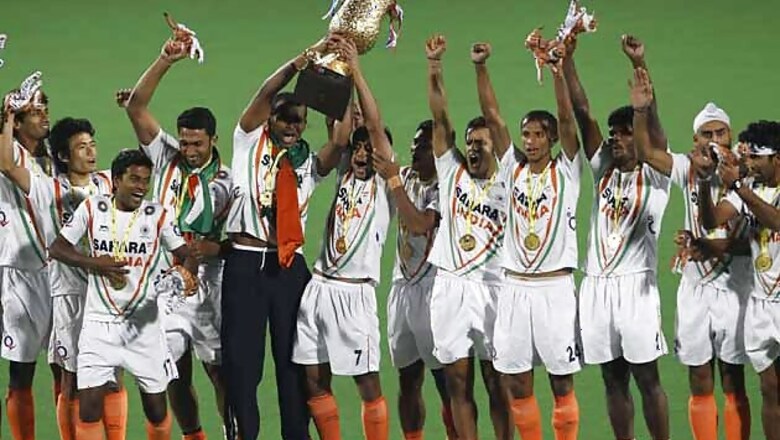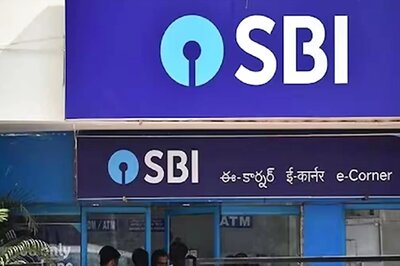
views
The year 1980 was the last time India won a hockey gold at the Olympics. Or better put, that was the last time India won any Olympic hockey medal. That's a long time, 32 years, and it seems longer when you consider India are eight-time Olympic champions - once unbeaten at the quadrennial games from 1928-1956.
For a team with such cherished history, an Olympic medal draught seems unreal, almost illusionary. But it's not something that slid under the door overnight. The reasons of failure are aplenty, most of which are publicly known than unknown. Things have looked up in the last year or so and a medal in London has turned into a possibility, if not probability.
COACH JOB
The appointment of Michael Nobbs has undoubtedly proved the stepping stone of this upward trend. It's been a year now since the Aussie received his appointment letter - a five year contract that runs until the 2016 Olympics. A five-year contract was never heard of in Indian hockey, and the credit goes to Hockey India.
Nobbs brought with him an aggressive intent, backroom approach and a determination to tie all the loose ends. Youth was preferred over tired, old legs. It created a stir. The positive results silenced one and all. But the best Nobbs has achieved so far is help India overcome the 2008 Olympic miss and storm to London undefeated in the qualifiers.
One year into the job is a small period, small to expect sweeping rewards like an Olympic medal after a 32-year hiatus, and Nobbs is practical, not pessimistic, about it. "[What] I am pleased with is we are not far off the top teams in terms of level of play. I was worried that we would be a long way off but we aren't. If we can fix our problems [defence and scoring field goals] quickly, we could get a podium finish; if not, then top six is still a realistic goal."
A clear indication that this is re-building process, but provided India surprise some of the big guns in their group, the medal drought may end in London.
THE GAINS
With Nobbs arrived some positive gains for Indian hockey. One of those, which has largely gone unnoticed, is fitness. Nobbs and David John, the physical trainer, have introduced a regimen that has helped players last a match full-throttle. Rolling substitutions allow players breathers, but once on the pitch, top is the only gear in fast-paced, modern hockey. And that's where Indian players can be seen improving.
The team looks fitter than it was this time last year, which was on show during the Champions Challenge I (runners-up), Olympic qualifiers (winners) and the recently concluded Sultan Azlan Shah Cup (bronze medalists).
Where Nobbs has also made the difference is giving the players a chance to express. They don't hide injuries now in fear of being dropped - like some of the discards have done in the past. And that, for Indian hockey, is a big change in the mindset and undoubtedly the biggest gain, which helps in building trust between the player, the coach and the federation.
Improved fitness levels have also helped India overcome their old flaw of conceding late goals to lose. The players don't tire easily now and match the speed of their opponents even in the dying minutes. This should help India against the super-fit Australians and the Europeans.
THE BRIGHTEST STARS
Picture this: Apart from Ignace Tirkey and Sandeep Singh, it will be the first Olympics for the rest of the squad. Any downsides? Not really. In a way it's good that stars like Shivendra Singh, Tushar Khandker and SV Sunil - who form a lethal attacking line - are untouched from Olympics pressure. It may allow them to play with a sense of fearlessness, unleash their best and surprise the opposition.
Shivendra has been India's best bet to score field goals for some time now, with Tushar to his left and Sunil to his right. Sunil, perhaps, is the best thing to have happened to India in recent times. His speed is unmatched in international hockey, which gives India an edge while building attacks from the wings.
Tushar is another opportunistic scorer in the Indian ranks, who teams up well with Shivendra up front. And even if the trio doesn't score, they have an important job to bring Sandeep into play by earning penalty corners. The turbanator is the most feared drag-flickers in the world today and will be cynosure of India's campaign, especially after his 15 goals in the Olympic qualifiers.
The lynchpin, though, remains playmaker and team's vice-captain Sardar Singh - who has featured in the World XI for the last two years. He is the one who can take the bull by the horns against the top teams, help India stun the favourites and make a place in the semi-finals.
MOTIVATION
The tide is not only turning on the field, but off it as well. Hockey India has decided to award central contracts to 32 players for the year 2012-13, which will include an annual retainer fee. That is commendable and something the players deserve and should feel good about before the Olympics.
Not just that, the game's governing body has also signed 28 players for the city-based pro-league, which is slated to be played between January and February next year. It's something on the lines of cricket's Indian Premier League (IPL) and will include an auction pool of 96 domestic players. To give the players an added confidence, the league also has the backing of International Hockey Federation (FIH).
STAY ON GUARD
Like any other team, Bharat Chetri's men also have some frailties, probably a bit more than most when it comes to a competition as big as the Olympics.
India rely heavily on goals from penalty corners. That not only helps opponents cut down on India's scoring chances by not conceding penalty corners but also puts added pressure on penalty-corner specialists Sandeep and VR Raghunath.
And in all honesty, Sandeep and Raghunath are more drag-flickers than defenders, which has been and in all probability will be India's biggest headache in London. That brings India's third full-back, the reliable Ignace, firmly into the frame. It's hard to see Sandeep and Raghunath together on the pitch for much part of a game, which means Tirkey may be asked to play most of the 70 minutes and not allow opponents breach India's defence that often.
TOUGH DRAW
India are placed in Group B along with Korea, Germany, Holland, New Zealand and Belgium, while Pakistan, Australia, Britain, Spain and Argentina are in Group A.
India begin their campaign on July 30 against Holland.
THE LAST WORD
Coach Nobbs is pretty pleased and expectant of the 16 boys he has chosen to get India to the podium in London. Nobbs also promises that his team is not going to die, should they die, without a fight. "One thing I can tell you. These boys will give us everything they have. They will not leave anything on the pitch after the last game. The fans will get a team that's going to give everything they have."
Striker Shivendra echoes his coach's words, stressing that the team is bonding well, which is helping to relieve pressure and increase the confidence. "Mental strength is important during such a big tournament. We feel the pressure and are using team bonding to reduce it. More we talk to each other, more the pressure get reduced. It enhances our confidence level as well."
SQUAD:
Goalkeepers: Bharat Chetri (capt), PR Sreejesh.
Defenders: VR Raghunath, Ignace Tirkey, Sandeep Singh.
Mid-fielders: Sardar Singh (vice-captain), Gurbaj Singh, Birendra Lakra, Manpreet Singh.
Forwards: SV Sunil, Gurwinder Singh Chandi, Shivendra Singh, Danish Mujtaba, Tushar Khandker, Dharamvir Singh, SK Uthappa.
Standbys: Sarwanjit Singh, Kothajit Singh.



















Comments
0 comment